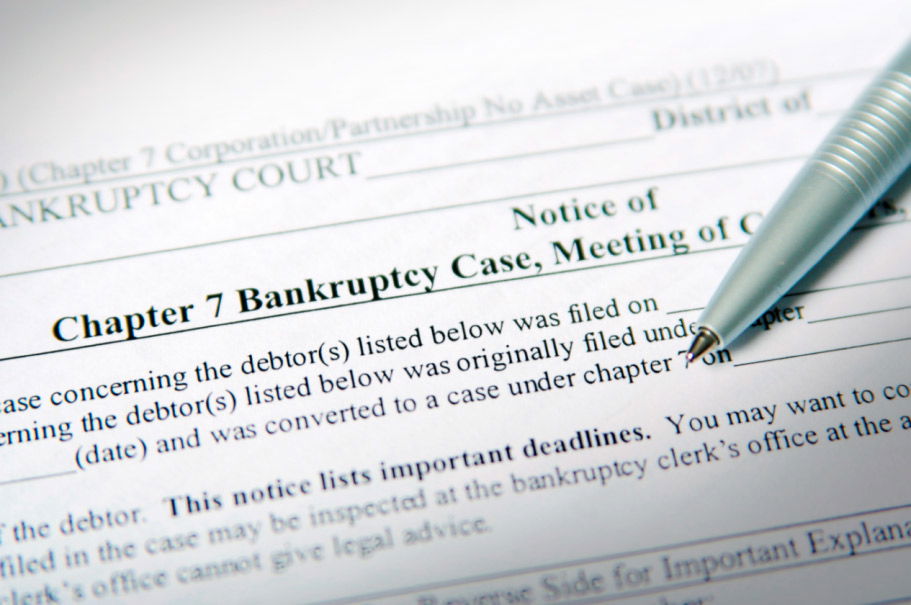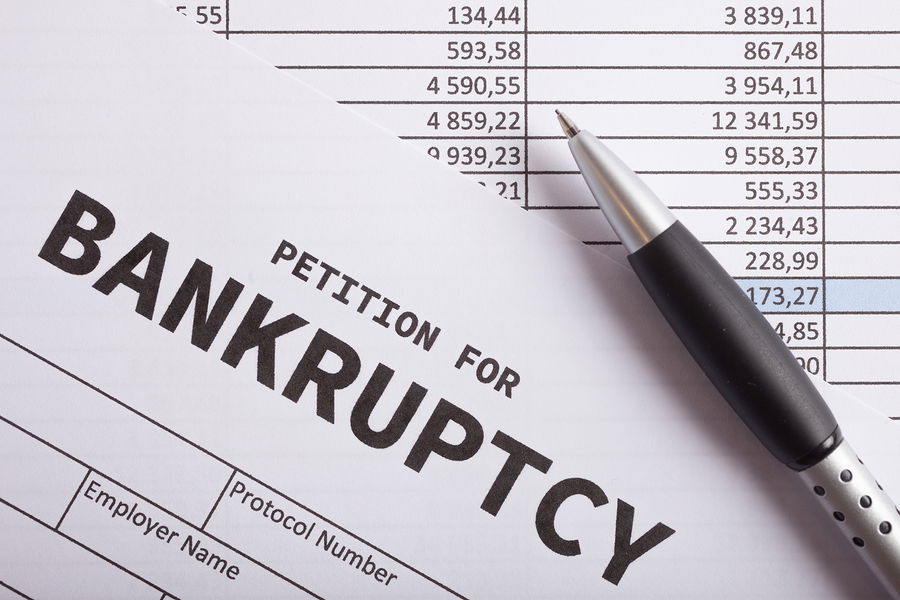Filing bankruptcy is one of the biggest financial decisions you can make, but it doesn’t have to feel overwhelming. Once you’ve chosen to move forward, the key is knowing the process and following each step carefully.

This guide explains what you need before you file, what happens during the case, and how to rebuild afterward. Whether you’re considering Chapter 7 or Chapter 13, you’ll see exactly what to expect along the way.
If you’re filing personal bankruptcy, use this as your roadmap. It will help you stay organized, avoid delays, and move toward a fresh financial start with confidence.
Bankruptcy Basics: What You Need to Know
Before you start the filing process, it helps to understand what bankruptcy can actually do—and what it can’t.
What Bankruptcy Can Do
- Eliminate unsecured debts: Wipes out obligations like credit card balances, medical bills, and personal loans.
- Stop collections: Ends lawsuits, wage garnishments, and harassing calls once you file.
- Protect assets (in some cases): Certain property is exempt, meaning you may be able to keep essentials like your car, home equity, or retirement accounts.
What Bankruptcy Cannot Do
- Erase child support, alimony, or most tax debts.
- Cancel student loans in most cases (these require proving extreme hardship, which is difficult).
- Fix your credit overnight—your credit report will show the bankruptcy for years, though you can begin rebuilding right away.
There are two main types of consumer bankruptcy: Chapter 7 and Chapter 13. Chapter 7 is usually faster, discharging debts in a few months, but may involve giving up non-exempt property. Chapter 13 lets you keep property while following a 3–5 year repayment plan, often with reduced payments. (We’ll compare them in detail later.)
Bankruptcy is often best suited for people who are overwhelmed by unsecured debt, facing lawsuits or garnishments, or behind on mortgage or car payments with no realistic way to catch up. If you have steady income and your debt is manageable, alternatives like a debt management plan or negotiating directly with creditors may be worth trying first.
Step-by-Step Guide to Filing Bankruptcy the Right Way
You’ve made the decision to file bankruptcy, and now the focus shifts to following the process step by step. No matter if you’re filing Chapter 7 or Chapter 13, the core stages are very similar.
Getting each step right helps you avoid delays, protects your rights, and moves you closer to having your debts discharged.
Here’s a simple breakdown of what to do, when to do it, and what to expect from start to finish.
Step 1: Complete the Mandatory Credit Counseling Course
Before you can file bankruptcy, you must complete a credit counseling course from a provider approved by the U.S. Trustee Program. This requirement applies to everyone who files, no matter what chapter you choose.
The course takes about 60 to 90 minutes and can be done online, by phone, or in person. Most people finish it in one sitting. When you’re done, you’ll get a certificate that must be included with your bankruptcy petition.
Costs range from $10 to $50, but many providers reduce or waive the fee based on income. To find an approved agency, check the U.S. Department of Justice website for the most current list.
Step 2: Choose Between Chapter 7 and Chapter 13 Bankruptcy
Most personal bankruptcy cases fall under Chapter 7 or Chapter 13. The right choice depends on your income, assets, and long-term financial goals.
- Chapter 7 bankruptcy: Often called liquidation bankruptcy, it erases most unsecured debts such as credit card balances and medical bills. It typically takes three to six months but may require giving up non-exempt property.
- Chapter 13 bankruptcy: This creates a repayment plan lasting three to five years. You keep your property while making structured payments, often at a reduced amount.
Here’s a quick comparison:
| Feature | Chapter 7 | Chapter 13 |
|---|---|---|
| Timeline | About 3–6 months | 3–5 years |
| Debt erased | Most unsecured debts | Some unsecured + repayment plan |
| Property | May lose non-exempt assets | Keep property if payments are made |
| Income test | Must pass means test | No means test required |
| Best fit | Limited income, few assets | Steady income, want to protect property |
If you’re unsure which chapter is right for you, speaking with a bankruptcy attorney can help you weigh your options.
Step 3: Gather All Required Financial Documents
Having your paperwork ready makes the filing process smoother and helps avoid delays. Collect everything before you start filling out forms so you don’t have to stop midway.
You’ll typically need the following:
- Income proof: Pay stubs or income records for the past six months
- Tax returns: Usually for the last two years
- Bank account statements: From all open accounts
- Debt records: Credit card balances, loan statements, and collection notices
- Asset list: Real estate, vehicles, retirement accounts, and valuable personal property
- Monthly expenses: Rent, utilities, food, insurance, and transportation costs
Creating a simple spreadsheet or checklist can keep everything organized and make it easier to complete the forms accurately.
Step 4: File the Bankruptcy Forms Accurately
Bankruptcy involves a lot of paperwork, and accuracy matters. You’ll need to complete a petition, schedules listing your debts, assets, income, and expenses, and other required disclosures.
The forms are free to download from the U.S. Courts website. Filing fees are currently $338 for Chapter 7 and $313 for Chapter 13. If you cannot pay the fee upfront, you can request a waiver or ask the court to let you pay in installments.
Many people handle the paperwork with the help of an attorney or bankruptcy software to avoid mistakes that could cause delays or even dismissal of the case.
Step 5: File Your Bankruptcy Petition with the Court
Once your forms are complete and your credit counseling certificate is ready, you’ll file your case with the bankruptcy court in your district.
Most courts let you file online through their electronic system, but you can also file in person. The moment your case is filed, the automatic stay takes effect, which legally stops most collection efforts right away.
You’ll receive a case number and be assigned a bankruptcy trustee. The trustee reviews your paperwork, checks for accuracy, and oversees the next steps, including the meeting of creditors.
Step 6: Use the Automatic Stay to Pause Collections
The automatic stay begins as soon as your bankruptcy petition is filed. This powerful court order puts an immediate hold on most collection activity.
Here are the actions it usually stops:
- Lawsuits: Any pending case against you is paused.
- Wage garnishments: Money coming out of your paycheck is put on hold.
- Foreclosures: Lenders must stop foreclosure proceedings.
- Collection calls and letters: Creditors are required to stop contacting you.
In a Chapter 13 case, the stay can remain in place for the full length of your repayment plan, which often lasts three to five years. In Chapter 7, it typically remains until your case is closed or dismissed.
The stay does not block every type of action. It won’t stop child support, alimony, criminal proceedings, or certain tax-related matters. If a creditor ignores the stay and keeps trying to collect, you can report it to the court, and penalties may apply.
Step 7: Attend the 341 Meeting of Creditors
About a month after filing, you’ll attend a short hearing called the 341 meeting. This is a required step for both Chapter 7 and Chapter 13 cases.
The meeting usually lasts less than 15 minutes. You’ll meet with your bankruptcy trustee, who will ask questions about your finances, assets, and debts. Creditors have the right to attend, but in most cases they don’t show up.
Bring these items to the meeting:
- Government-issued photo ID
- Social Security card
- Recent bank account statements
- Pay stubs or proof of income
Missing the 341 meeting without a valid reason can result in your case being dismissed. If you cannot attend, contact the trustee’s office ahead of time to request a reschedule.
Step 8: Complete the Post-Filing Debtor Education Course
Before your case can be closed, you must complete a second course known as debtor education or the post-filing education course.
This course covers topics like budgeting, smart credit use, and financial planning. It typically takes one to two hours and costs between $10 and $50. You must complete it through a provider approved by the court.
Once finished, you’ll receive a certificate that must be filed with the bankruptcy court. If you fail to submit this certificate, your case could close without a discharge, even if every other step was completed correctly.
Step 9: Receive Your Bankruptcy Discharge and Close Your Case
The final step is receiving your discharge. This court order officially erases eligible debts and marks the end of your bankruptcy case.
Here’s the typical timeline:
- Chapter 7 bankruptcy: Most filers receive their discharge 60 to 90 days after the 341 meeting.
- Chapter 13 bankruptcy: You must finish your three- to five-year repayment plan before the discharge is granted.
Debts usually discharged include:
- Credit card balances
- Medical bills
- Personal loans
- Old utility bills
Debts not discharged include:
- Student loans in most cases
- Recent tax debts
- Child support and alimony
- Court fines and criminal restitution
Once your discharge is entered, your case will close shortly after. This gives you the clean slate you’ve been working toward.
Life After Bankruptcy: How to Rebuild Your Credit
Filing bankruptcy gives you a clean slate, but your credit report will reflect it for years. A Chapter 7 bankruptcy stays on your credit report for 10 years, while Chapter 13 remains for 7 years. Even so, you can begin rebuilding right away.
Here are some smart ways to start:
- Apply for a secured credit card: A deposit-backed card helps you re-establish positive payment history.
- Consider a credit-builder loan: Some banks and credit unions offer small loans designed to improve your credit score.
- Keep balances low: Aim to use only a small percentage of your available credit.
- Pay all bills on time: Consistent on-time payments are one of the fastest ways to rebuild.
- Create a realistic budget: Track your spending to avoid falling back into debt.
Over time, these steps show lenders you can manage credit responsibly. In many cases, people can qualify for a car loan within a year or two, and a mortgage in as little as two to four years, depending on the lender and overall financial profile.
Alternatives to Bankruptcy You Should Consider
Bankruptcy can be the right choice for many people, but it isn’t the only option. Before filing, you may want to explore alternatives that could provide relief without the long-term impact on your credit report.
- Debt management plan: Offered through nonprofit credit counseling agencies, this consolidates your unsecured debts into one payment with reduced interest rates.
- Debt settlement: Negotiating with creditors to accept less than the full balance owed. While it can lower your total debt, it may hurt your credit score in the short term.
- Direct negotiation with creditors: Sometimes you can work out lower payments, interest reductions, or extended repayment terms without going through a third party.
Exploring these options first may help you decide whether bankruptcy is necessary or if another approach fits your situation better.
Final Thoughts
Filing bankruptcy is never easy, but making the decision to file bankruptcy means you’re ready to take back control of your finances. Once you’ve completed the process, you’ll have the chance to rebuild, reset, and create better financial habits.
Follow the steps carefully, stay organized, and use the fresh start to move forward. If you run into challenges or your case is complex, a bankruptcy attorney can provide guidance and peace of mind.
Bankruptcy does not define your future—it clears the path for it.




